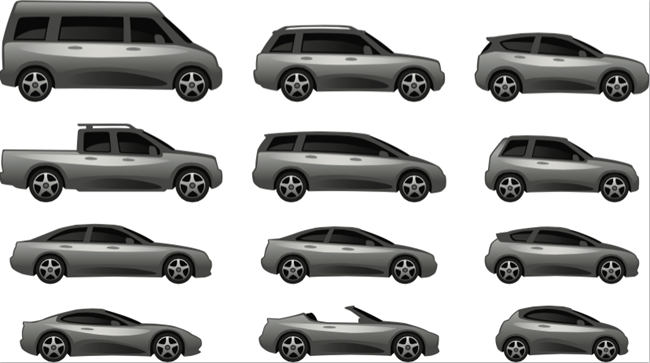
The start point for the best source of fleet information |
Car-less cash allowance drivers named as new grey fleet trend
Date: 22 March 2021 | Author: Sean Keywood

The Covid-19 pandemic and associated home working policies has motivated more drivers to become grey fleet drivers - or indeed to move to no car at all, instead spending a cash allowance on public transport.
That's according to speakers at the recent 'Grey Fleet Best Practice' webinar held by the Association of Fleet Profesionals (AFP), which offered fleet managers advice on managing grey fleets that may be increasing in size.
As chair Paul Hollick explained, there is now a trend being seen of employees not even owning their own grey fleet vehicle.
Hollick said: "We're starting to see, as an industry, some drivers that are taking a car allowance, and actually not even running a car.
"With the lack of business miles driven, and as long as the company is happy to give a car allowance to an employee as a perk benefit, and they are still committed to be able to use a vehicle on company business, then we're starting to see a population within our industry of employees who take the cash, then don't have a permanent car, and will use spot rentals, and trains, and taxis, and Ubers.
"So, we need to start to think about that, and how we manage that process as well as fleet managers."
The webinar heard that grey fleet in general has seen an increase over the past 12 months, with company cars sitting idle causing drivers to rethink.
Emma Loveday, UK commercial development manager at Drivetech, said: "This past year has forced organisations to adapt, and to adopt working from home as a default.
"Company cars have been sat on drives gathering dust, only used for the weekly shop, so this is believed to have led, and is still leading to, an increase in grey fleet, an increase in cash allowance takers, and a reduction in company cars on the road.
"These next 12 months are going to be really interesting and really telling of the impact Covid has had on this area. With that in mind, it's really important as organisations to have comprehensive grey fleet policies and processes in place."
Alison Moriarty, fleet risk director at Driive Consulting, said: "We know for an absolute fact that grey fleet is growing, and we can see that even from some clients we are working with who are moving away completely from company cars.
"It's more and more important to make sure that those grey fleet drivers are encompassed in that overall safety culture."
Chris Connors, head of facilities and fleet at Countryside Properties, agreed, setting out how he had seen grey fleet growing in his role.
He said: "We've seen a real shift in the split between the car take-up and the allowance take-up.
"A couple of years ago there was around a 50/50 split. We've now pushed to nearly 70% of our drivers are taking the allowance. It's probably a little bit to do with Covid, a little bit to do with BIK.
"I'd like to think it was temporary that it was going to such a high percentage of allowance drivers, however with new ways of working and coming out of Covid, I'm not so sure, so we need to be gearing up for the fact that the allowance drivers and the grey fleet is going to be more prevalent that it was a couple of years ago."
Loveday suggested that best practice for organisations would include setting out vehicle standards for grey fleet drivers.
She said: "Best practice for managing grey fleet vehicles is to ensure you have minimum vehicle standards included in your fleet policies, and communicated really well with your drivers.
"Key elements to consider are NCAP safety ratings, emission levels, required safety features such as seatbelts, and also essential breakdown cover - often overlooked and again, really, really important.
"Consider as well enforcing standards such as the maximum age of a vehicle, and maybe a maximum CO2 limit. Large organisations have got CSR agendas and carbon footprint reduction targets, so a maximum CO2 limit will obviously help achieve that."
Moriarty added that companies should not necessarily be rushing to readopt the same old level of business travel as Covid restrictions were lifted.
She said: "As restrictions are starting to lift now, we're all looking to get out of our little offices and have human contact with people, but I think we need to look at can we still do some of the things we do from home.
"Although it is a bit of a cliché, the safest journey is the one we don't take, and even when it starts to open up I think we need to really shift from 'can I now do a journey' to 'should I now do a journey', and I think there is a massive difference between those two.
"I think we need to be careful that we don't all just go out on the road now because it's legal to do so."










